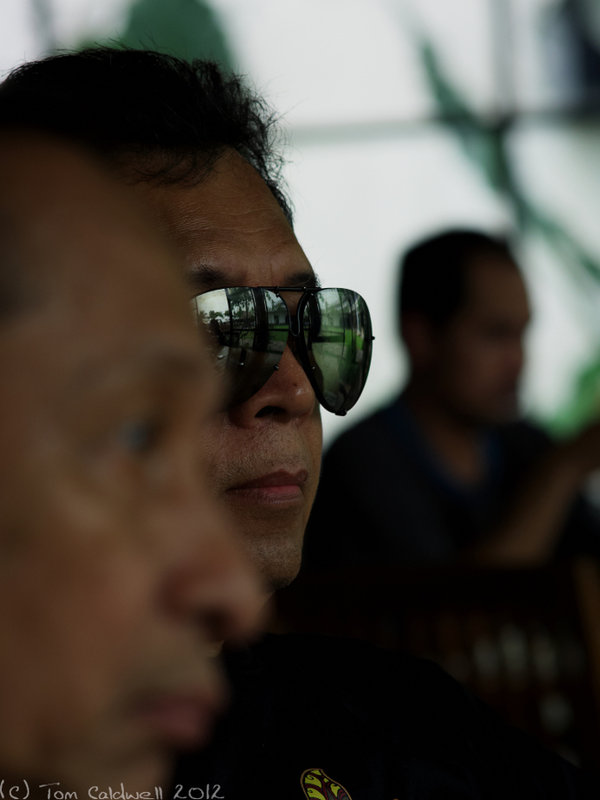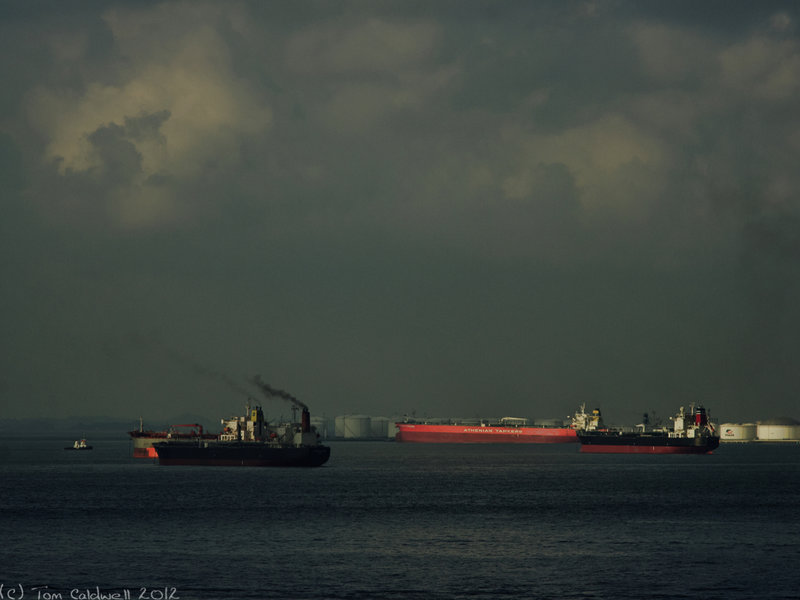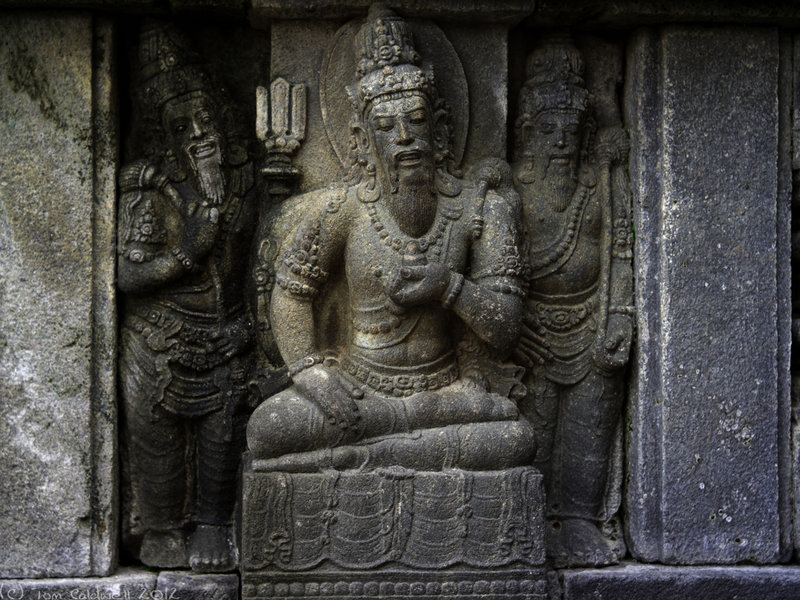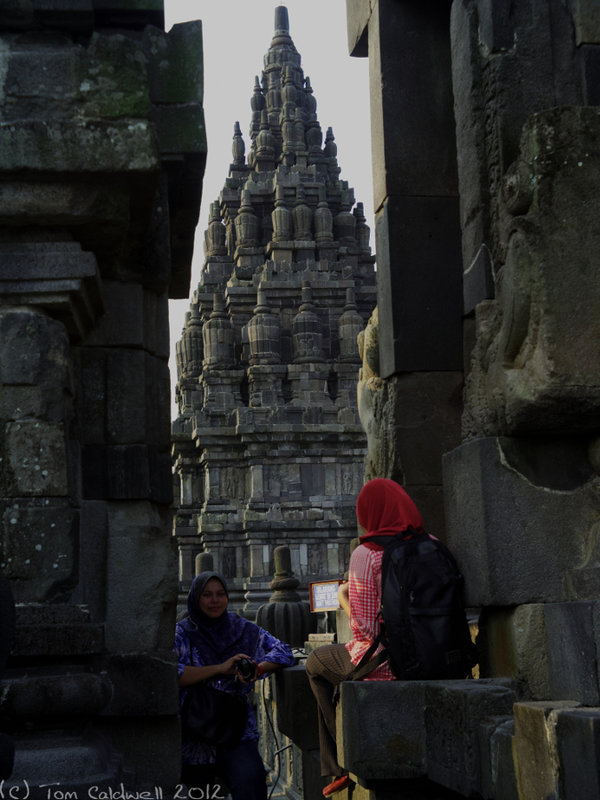Tom Caldwell
New Member
Been overseas, so what is new?
My wife warned me that I was not allowed to take my whole camera kit (meaning dslr gear) - but no problem, I had been honing up my rag-tag collection of GXR-M suitable lenses. But whilst being a devotee of manual slr lenses adapted to the LM mount the size restrictions of these lenses would quickly fall foul of size and weight limitations prescribed for me.
So quite desperate to try out a range of lenses I had to select a representative kit that may have had some overlap in function.
In the end I took a Voigtlander 15mm f4.5, Russar MR-2 20mm f5.6, Ricoh GR 28mm f2.8, Jupiter-12 35mm f2.8, Voigtlander Nokton 40mm f1.4, Jupiter-3 50mm f1.5, Jupiter-8 50mm f2.0, Jupiter-9 (ltm) 85mm f2.0, Minolta M-Rokkor 90mm f4.0, Jupiter-11 (1955 model!) 135mm f4.0. Covered the range from 22.5mm - 200mm effective and the baggage was acceptable.
All this and a few more bits fitted into a "wearable" shoulder bag. My object was to try as many different lenses as I could reasonable hope to carry without too much inconvenience. The collection might overlap in focal length but we have a good variation of "lens-capture look" to add some spice to the performance. I tried to use a different lens a day to give myself a decent amount of feedback.
I have not had time to process any images yet but promise to get some examples up of each lens.
Without the "seeing is believing" of sample images I note a few points:
It was hard to see the extra benifit of a Jupiter-3 over the very nice Jupiter-8; the Ricoh GR (as mighht be expected) was a standout; I have fallen in love with the Jupiter-9 even though the Rokkor is also excellent, the J-9 is physically larger, but also a faster lens and has its own "look". The J-11 is a less "universal" lens having close focus at 2.5 metres, but it is quite useful from there to infinity and I am happy with it.
I must emphasise here that I am not into "perfection" in lenses but more into whether I like using a lens and that the lens I use produces a "look" that I like. So a lens to me is "art" rather than rigorous scientific precision. So I am not talented enough to produce high quality arthouse images, but I am willing to be "experimental" in my choices and a pioneer of new horizons. In fine wine terms I tend to take a bottle from the rack and only check the label if I have enjoyed the experience.
So for the expense of the odd rough red I have been also often been amazed and delighted by many that I have tried that don't carry designer labels.
Give me a few days and I will get some sample images on this thread but in the meantime if any of these lenses is of interest then let me know and I can prioritise what I am processing. I did take a few J-3 shots but the J-8 worked so well there hardly seemed any point.
Only once did I resort to the VF2 which I found clumsy in use in bright light although useful in that regard. For the rest of the time in some glaringly bright conditions I managed without. I did notice that in some very bright light / backlit situations the magnified Mode2 view just could not be discerned. However temporarily raising the EV brought the contrast indicator lines into display, then once focused, the EV could be reduced again to take the image.
TomC
My wife warned me that I was not allowed to take my whole camera kit (meaning dslr gear) - but no problem, I had been honing up my rag-tag collection of GXR-M suitable lenses. But whilst being a devotee of manual slr lenses adapted to the LM mount the size restrictions of these lenses would quickly fall foul of size and weight limitations prescribed for me.
So quite desperate to try out a range of lenses I had to select a representative kit that may have had some overlap in function.
In the end I took a Voigtlander 15mm f4.5, Russar MR-2 20mm f5.6, Ricoh GR 28mm f2.8, Jupiter-12 35mm f2.8, Voigtlander Nokton 40mm f1.4, Jupiter-3 50mm f1.5, Jupiter-8 50mm f2.0, Jupiter-9 (ltm) 85mm f2.0, Minolta M-Rokkor 90mm f4.0, Jupiter-11 (1955 model!) 135mm f4.0. Covered the range from 22.5mm - 200mm effective and the baggage was acceptable.
All this and a few more bits fitted into a "wearable" shoulder bag. My object was to try as many different lenses as I could reasonable hope to carry without too much inconvenience. The collection might overlap in focal length but we have a good variation of "lens-capture look" to add some spice to the performance. I tried to use a different lens a day to give myself a decent amount of feedback.
I have not had time to process any images yet but promise to get some examples up of each lens.
Without the "seeing is believing" of sample images I note a few points:
It was hard to see the extra benifit of a Jupiter-3 over the very nice Jupiter-8; the Ricoh GR (as mighht be expected) was a standout; I have fallen in love with the Jupiter-9 even though the Rokkor is also excellent, the J-9 is physically larger, but also a faster lens and has its own "look". The J-11 is a less "universal" lens having close focus at 2.5 metres, but it is quite useful from there to infinity and I am happy with it.
I must emphasise here that I am not into "perfection" in lenses but more into whether I like using a lens and that the lens I use produces a "look" that I like. So a lens to me is "art" rather than rigorous scientific precision. So I am not talented enough to produce high quality arthouse images, but I am willing to be "experimental" in my choices and a pioneer of new horizons. In fine wine terms I tend to take a bottle from the rack and only check the label if I have enjoyed the experience.
So for the expense of the odd rough red I have been also often been amazed and delighted by many that I have tried that don't carry designer labels.
Give me a few days and I will get some sample images on this thread but in the meantime if any of these lenses is of interest then let me know and I can prioritise what I am processing. I did take a few J-3 shots but the J-8 worked so well there hardly seemed any point.
Only once did I resort to the VF2 which I found clumsy in use in bright light although useful in that regard. For the rest of the time in some glaringly bright conditions I managed without. I did notice that in some very bright light / backlit situations the magnified Mode2 view just could not be discerned. However temporarily raising the EV brought the contrast indicator lines into display, then once focused, the EV could be reduced again to take the image.
TomC







